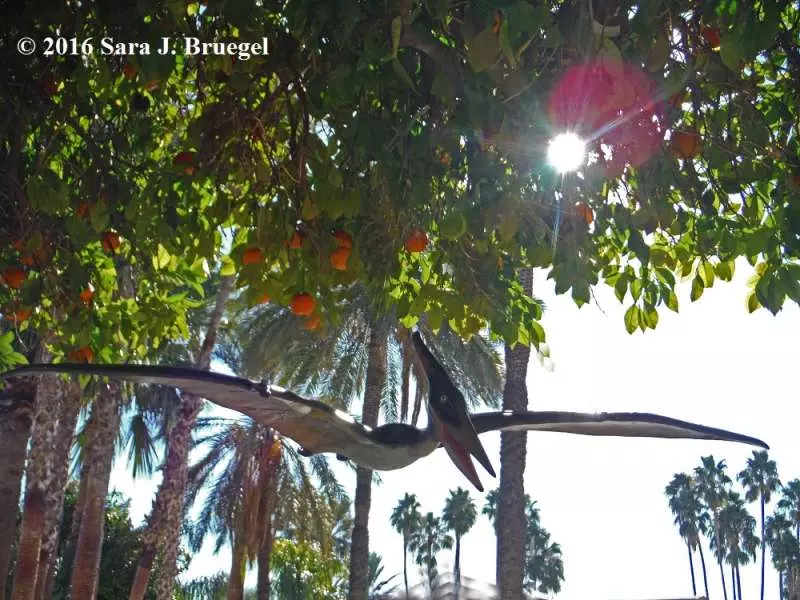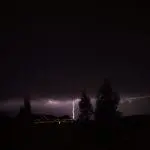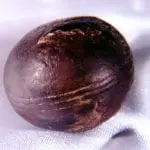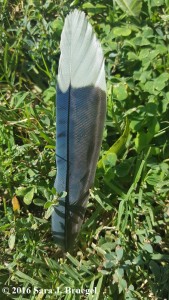
The stunning, blue color made a dramatic contrast to the bright green summer grass. It was just a single Blue Jay feather sitting on the grass. Feathers always remind me of the incredibly intricate and beautiful way our creator gave birds the ability to fly (more about flight and fossils here). But, the beautiful birds we see today are definitely not the only creatures that have been given the special ability to fly, and there is a vast variety of ways that these creatures fly. Hummingbirds fly differently from sparrows. Bats use air travel in a different way than insects or birds. Dragonflies and butterflies have different ways of flight, too (more on butterflies and dragonflies here). And although you probably haven’t seen a pterosaur flying around your backyard bird feeder, they too, have a specially designed ability for air travel (read last week’s article introducing pterosaurs here).
One thing that makes pterosaurs especially interesting is that we know these creatures could walk on all-fours, based off the tracks and pterosaur bones in the fossil record. Sometimes people question how some of the giant pterosaurs with forty-foot wingspans (about the length of a school bus) could take off. Wouldn’t they be too heavy for those thin, delicate wings to carry? Actually, the special way God designed the pterosaur would make it quite the graceful sky glider. The way their weight compares to their wing size is ideal for gliding over long distances. Your normal backyard birds bear most of their body weight on their two feet (back limbs) and use those to take off. However, the pterosaur would use all four limbs to help it take off. Based off fossil footprint patterns, we can tell that pterosaurs had graceful landings. They did not end in a running land like ducks, but continued at a consistent stride, walking after landing.
Let’s take a look at pterosaur wings. Stretch out both of your arms with the palms of your hands facing down and imagine you are a pterosaur. Your pinky finger would be extra long – that finger alone would be longer than your entire arm length, added to the end of your arm. Your kite-like wings would stretch from the tip of that long pinky finger all the way down to your legs, ending at either your thighs or ankles. Instead of your normal thumbs on your hand, imagine moving those thumbs up close to your elbow and flipping them so they point toward your head, instead of away from your body like all the other fingers. This “thumb” is a good way to imagine one of the key features of pterosaur flight – the pteroid bone. Another section of thin wing stretches from this pteroid bone up to your shoulder or neck. These special flaps of wings allowed the pterosaur to take off and fly with more ease and grace. More sections of wing between the legs helped allow the pterosaur maneuver more gracefully.
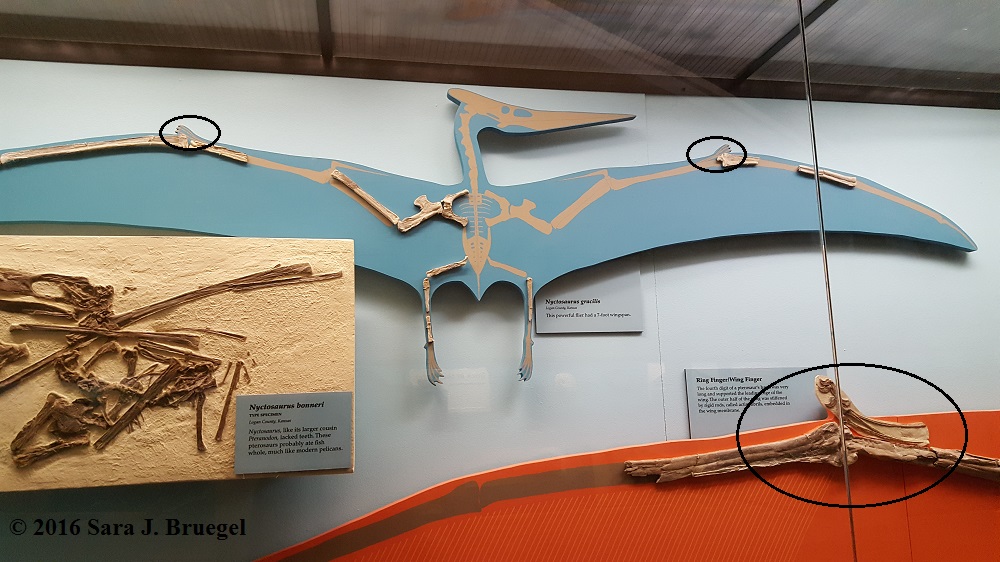
The careful design and intricacy of flight in pterosaurs speaks beautifully of our caring, intelligent Creator. Evolutionary ideas try to explain pterosaur evolution by telling us that there are still just lots of undiscovered ancestors in the fossil record, also called “missing links” or “ghost lineages”. Thousands of pterosaur fossils have been found all over the world, but never one of a creature turning into anything like a pterosaur. With all the different types of flying creatures, the ability to fly would have had to “evolve” many different times and places if evolution were true. With no fossil evidence of these “ghost lineages” among pterosaurs and other flying creatures, perhaps it would be good to consider an alternative: that God delicately designed all flying creatures with their special abilities on the fifth day of creation week, just a few thousand years ago. The flying pterosaurs draw our eyes upward, to the One who made them and us.
Copyright Sara J. Bruegel, July 2016

